Birth
- Birth statistics
- Stages of labour
- Birthing types
- Birthing positions
- Who is present at a birth?
- How will I know when I am in labour?
- Induction and augmentation of labour
- Pain during childbirth
- My experience:
Birth statistics
 | Information on Australian birth statistics include where women have their babies, average age of mothers, different types of delivery, duration of different stages of labour, obstetric care, number of children, multiple births, babies sex, early or late deliveries, birth weights, etc. |
For more information, see Birth Statistics.
Stages of labour
 | Labour is the process of passage of the foetus and placenta from the uterus, through the vagina, to be external to the mother. There are three distinct stages of labour – cervical dilation, expulsion of the fetus and delivery of the placenta. |
For more information, see Stages of Labour.
Birthing types
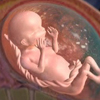 | Modern medicine has seen the introduction of new ways in which women can give birth. The traditional vaginal birth method is still widely used. However, more women are opting to undergo elective caesarean delivery. The use of a water bath during labour and/or birth is also beginning to gain popularity. |
For more information, see Birthing Types.
Vaginal delivery
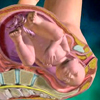 | Vaginal birth involves the delivery of a baby from the uterus (womb), out through the vagina and is still the most common method of birth in Australia. |
For more information, see Vaginal Delivery.
Birthing positions
 | The best position for a woman to adopt during labour and birth depends on which stage of labour she is in, what position she finds most comfortable, and whether there are any complications. Birthing positions include standing, sitting, squatting, kneeling, lying on the side and lying on the back. |
For more information, see Labour and Birthing Positions.
Who is present at a birth?
 | People present at a birth may include obstetricians, GP-obstetricians, midwives and birth companions. The most appropriate person to assist in delivery depends on the mother’s preference, health of the mother and her baby, complications that may arise, and environment. |
For more information, see Who is Present at a Birth?.
How will I know when I am in labour?
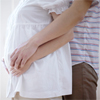 | The start of labour is identified by regular coordinated contractions (feeling of tightening with pain), which cause the cervix (neck of the womb) to become shorter (effacement), then dilate (open). |
For more information, see How Will I Know When I Am In Labour?.
Induction of labour
Induction of labour- Medical and Surgical Methods
 | Induction of labour (IOL) is a relatively common procedure that aims to achieve vaginal birth prior to spontaneous onset of labour. This article discusses medical and surgical induction of labour. |
For more information, see Induction of labour- Medical and Surgical Methods.
Inducing labour- Natural Methods
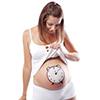 | These methods may be used in an attempt to avoid medical induction of labour, or may be used in combination with medical methods. |
For more information, see Inducing labour- Natural Methods.
Pain during childbirth
 | Almost all women experience pain during childbirth. Pain is an expected symptom of labour and varies in severity. The majority of women experience severe labour pain, with only a small number reporting minor or no discomfort. Management of pain during childbirth falls into two categories: with or without medication. |
For more information, see Pain During Childbirth.
My experience
My experience: Tania’s bundle of joy
 | For women planning a pregnancy or considering having children in the future, it’s always good to hear about the experiences of other women to get an idea of what you may be in for. We talk to Tania about her first-time birthing experience and get the truth – straight from the horse’s mouth and bare as a newborn baby’s bottom. |
To read Tania’s story, see Tania’s bundle of joy.
My experience: Katie’s caesarean birth
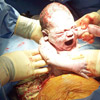 | Being told you will have to receive an emergency caesarean, or even a planned caesarean, can be very daunting. If this is what you’re facing, or if you’re worried about your upcoming labour, fear not because Katie has faced it too – twice! She now has two beautiful babies who travelled safely from tummy to mummy by c-section. |
To read Katie’s story, see Katie’s caesarean birth.
More information
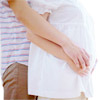 | For more information about pregnancy, including preconception advice, stages of pregnancy, investigations, complications, living with pregnancy and birth, see Pregnancy. |
Dates
Created by:

 Login
Login














